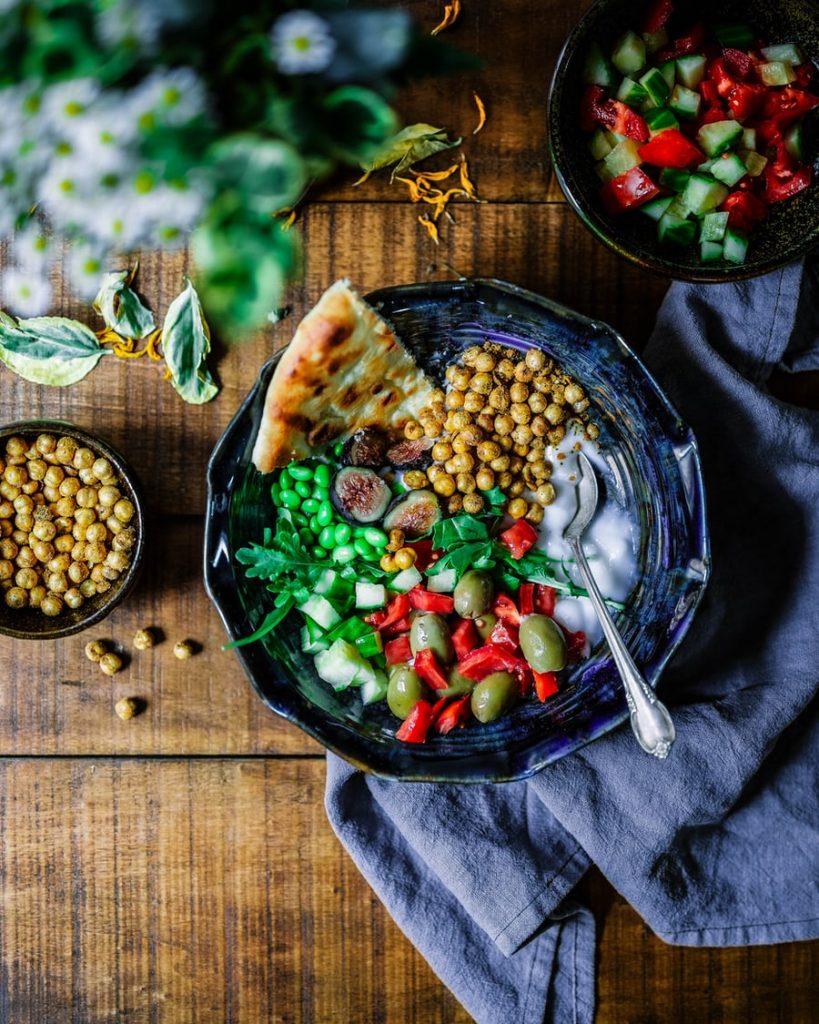
Remember that fish canned in brine, or smoked fish, can be high in salt. You can eat fresh, frozen or canned fish. This includes beans, chickpeas, lentils and peas. Beans and pulsesīeans and pulses are naturally low in fat, filling and can often provide a healthy and cheaper alternative to meat in most dishes. If you eat more than 90g per day of red or processed meats, try to reduce this to no more than 70g per day. Limit processed meats such as sausages, bacon and cured meats.
#HEALTHY FOOD AROUND ME SKIN#
Cut the fat off meat and remove the skin from chicken. Choose leaner meats where possible and avoid adding extra fat or oil when cooking - use the grill instead of frying. The type of meat you choose and the way you cook it can make a difference: Some types of meat are high in fat - particularly saturated fat. Protein is used by the body for growth and repair. These foods are sources of protein, vitamins and minerals, therefore, it's important to include some foods from this group.  should be consumed at meal times to limit the impact on your teeth. are often much higher in sugar and don't contain as much fibre as whole fruit. counts as a maximum of one portion a day regardless of how many portions you have. 1 heaped tablespoon of dried fruit (should be kept to meal times)Ī small glass (150ml) of fruit juice or smoothie:. 3 heaped tablespoons of vegetables, fruit salad (fresh or tinned in juice) or stewed fruit. an apple, pear, banana, orange or other similar-size fruit. Portion sizesĪ portion of fruit and vegetables is 80g or: You can choose from fresh, frozen, canned, dried or juiced. However, potatoes don’t count towards your 5 a day as they're a starchy food. You should aim to eat at least 5 portions of a variety of fruit and vegetables each day. They're one of the 5 main food groups and should make up over a third of your diet. When planning meals, work out the main ingredients and think about how these fit within the 5 main food groups.įruit and vegetables are a good source of vitamins, minerals and dietary fibre - essential for maintaining a healthy gut and preventing digestion problems. Most of the meals we eat are a combination of food groups. You can use this guide to help you make healthier choices when: More healthy eating guidance for babies Using the Eatwell Guide
should be consumed at meal times to limit the impact on your teeth. are often much higher in sugar and don't contain as much fibre as whole fruit. counts as a maximum of one portion a day regardless of how many portions you have. 1 heaped tablespoon of dried fruit (should be kept to meal times)Ī small glass (150ml) of fruit juice or smoothie:. 3 heaped tablespoons of vegetables, fruit salad (fresh or tinned in juice) or stewed fruit. an apple, pear, banana, orange or other similar-size fruit. Portion sizesĪ portion of fruit and vegetables is 80g or: You can choose from fresh, frozen, canned, dried or juiced. However, potatoes don’t count towards your 5 a day as they're a starchy food. You should aim to eat at least 5 portions of a variety of fruit and vegetables each day. They're one of the 5 main food groups and should make up over a third of your diet. When planning meals, work out the main ingredients and think about how these fit within the 5 main food groups.įruit and vegetables are a good source of vitamins, minerals and dietary fibre - essential for maintaining a healthy gut and preventing digestion problems. Most of the meals we eat are a combination of food groups. You can use this guide to help you make healthier choices when: More healthy eating guidance for babies Using the Eatwell Guide 
Babies and young childrenĬhildren between the ages of 2 and 5 should gradually move towards eating the same foods in the same proportions recommended by the guide.Ĭhildren under 2 have different nutritional needs and so these recommendations don't apply.

If you've special dietary or medical needs, ask a registered dietitian or nutritionist about the best way to adapt this guide to your needs. These recommendations apply to most people regardless of their: You should try to choose a variety of foods from each group to help you get the nutrients you need to stay healthy. beans, pulses, fish, eggs, meat and other proteins.potatoes, bread, rice, pasta and other starchy carbohydrates.The Eatwell Guide divides the foods and drinks we consume into 5 main groups:







 0 kommentar(er)
0 kommentar(er)
